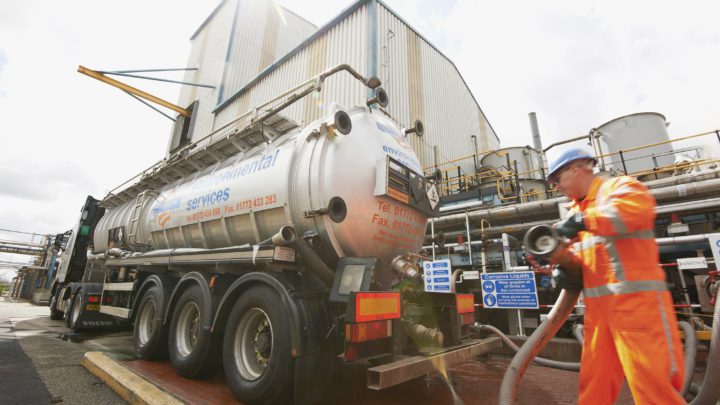
Europe’s logistics industry is suffering an unprecedented driver shortage; that much is known. But finding solutions is proving difficult.
Pay levels are obviously important. But improving working conditions could make a big difference in increasing the attractiveness of a life on the road.
The driver shortage has consumed much of the work of the European Chemical Transport Association (ECTA) in the past few years. At ECTA’s 2022 annual meeting, Raluca Marian, advocacy director of road transport lobby group IRU EU, gave a keynote presentation on the latest status of the EU Mobility Package and zoomed in on the overall problem of driver shortage.
She explained the results of a recent IRU survey which found the shortage of drivers could increase from 425,000 in 2021 to 1 million by 2026.
These numbers confirm that driver shortage is an overall, chronic and structural problem whereby it is time for action and engagement from all stakeholders to increase the attractiveness and productivity of job, she explained.
In October 2022, the ECTA Driver Shortage Workgroup published a follow up Position Paper explaining its action plan. Now, ECTA has announced that funds have been released to start building an ‘ECTA app’.
The purpose of the app is to give drivers a voice whereby they can rate chemical loading and unloading sites on five subjects: safety, waiting time, truck driver treatment, driver facilities, and total residence time.
The specifications for the ECTA app have been finalised and the IT developments are starting now.
Common objective
The follow up communication to the original ECTA position paper on driver shortage lays out a common industry objective: namely, to secure the movements of chemicals by road and combined transport now and in the future, all stakeholders need to make the chemicals truck driver job more attractive and productive across the industry.
ECTA’s research found that the chemical industry is losing more and more truck drivers for a number of reasons. For example, 30 percent of chemical truck shipments have a residence time of more than three hours at loading and unloading sites.
Moreover, the work-life balance of a driver’s job is below average compared with other sectors.
Truck drivers are not only confronted with very strict loading/unloading procedures at (un)loading sites, often these are also inconsistent and contradictory which then results in discussions with site operators.
Truck drivers are also often forced to wait due to inflexible time slots or short opening hours. Overall, truck drivers’ infrastructure could be much improved and should be made gender-friendly.
There is an increasing gap in understanding between the people operating the loading and/or unloading sites and those making contractual commitments to use these sites.
Finally, not all chemical truck drivers are considered as a valuable and scarce resource that needs to be treated with respect, and in addition all stakeholders, including loading facilities should be open to female drivers.
In essence, the driver shortage needs to be viewed as a collaborative industry problem. It is not a problem individual transport companies can solve on their own because the working conditions of a chemicals truck driver are mainly defined by the many loading and unloading touch points across Europe. These touch points are out of the control of transport companies, and much tighter collaboration with all stakeholders along the logistics chain is required to resolve the problem structurally.
More flexibility
Among the recommendations for the overall industry is to revise or even extend opening hours at loading/unloading sites to bring greater flexibility, while also creating greater flexibility in booking time slots.
Supporting initiatives for digital gate registration and adapting site inventory level requirements would help, as well as handling drivers “with more respect”.
ECTA’s focus is on collaborative industry action plan, built around loading and unloading facilities. This where the app comes in. The digital tool will provide chemicals drivers with the possibility to register data about loading and unloading sites across Europe. These data will be used to identify the best and worst in class, with specific attention given to the problem of unacceptable delays at facilities.
ECTA will communicate the findings gathered from the app to individual chemicals stakeholders. Summaries of these findings will also be shared with all ECTA members and – through social media – with wider professional interests.
At the end of the day, ECTA believes the daily job of a chemicals truck driver is not well understood by all stakeholders. ECTA will define a communication plan and strategy to communicate more about the positive aspects of being a chemicals truck driver while also promoting industry best practices.
Finally, ECTA will actively support chemicals producers in their efforts to come to structural improvements and to bring down waiting times outside the gate and on the premises of loading and unloading sites. The association further expects that individual chemicals companies will take responsibility for communication and improvement towards those companies to which loading and/or unloading activities are contracted out.
So, ECTA is reaching out to all stakeholders to join forces in improving the job image of the truck driver, job attractiveness and productivity. “The driver shortage problem is a big industry opportunity where each of the chemicals stakeholders needs to take responsibility and consider truck drivers as a very valuable and scarce resource,” ECTA concludes.
